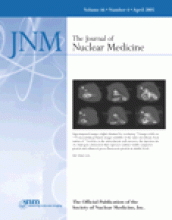Abstract
We investigated radiation exposure of patients undergoing whole-body 18F-FDG PET/CT examinations at 4 hospitals equipped with different tomographs. Methods: Patient doses were estimated by using established dose coefficients for 18F-FDG and from thermoluminescent measurements performed on an anthropomorphic whole-body phantom. Results: The most relevant difference between the protocols examined was the incorporation of CT as part of the combined PET/CT examination: Separate low-dose CT scans were acquired at 2 hospitals for attenuation correction of emission data in addition to a contrast-enhanced CT scan for diagnostic evaluation, whereas, at the other sites, contrast-enhanced CT scans were used for both purposes. Nevertheless, the effective dose per PET/CT examination was similar, about 25 mSv. Conclusion: The dosimetric concepts presented in this study provide a valuable tool for the optimization of whole-body 18F-FDG PET/CT protocols. Further reduction of patient exposure can be achieved by modifications to the existing hardware and software of PET/CT systems.
Footnotes
Received Aug. 5, 2004; revision accepted Dec. 10, 2004.
For correspondence or reprints contact: Gunnar Brix, PhD, Bundesamt für Strahlenschutz, Abteilung für Medizinische Strahlenhygiene und Dosimetrie, Ingolstädter Landstraβe 1, D-85764 Neuherberg, Germany.
E-mail: gbrix{at}bfs.de







